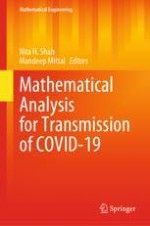2021 | OriginalPaper | Chapter
4. Transmission Dynamics of Covid-19 from Environment with Red Zone, Orange Zone, Green Zone Using Mathematical Modelling
Authors : Bijal M. Yeolekar, Nita H. Shah
Published in: Mathematical Analysis for Transmission of COVID-19
Publisher: Springer Singapore
Activate our intelligent search to find suitable subject content or patents.
Select sections of text to find matching patents with Artificial Intelligence. powered by
Select sections of text to find additional relevant content using AI-assisted search. powered by
